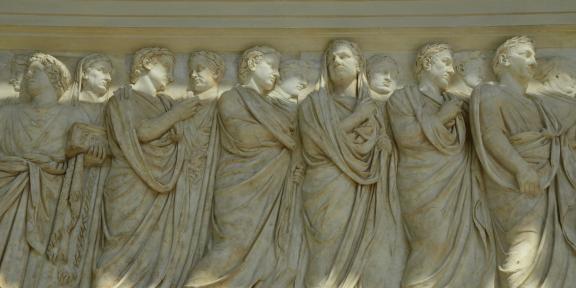Classics and Modern Languages enables you to combine study of Latin and/or Ancient Greek with a modern language. The course involves extensive study of major literary texts, alongside training in linguistic skills. Some papers on offer provide an opportunity to compare texts from both sides of the course, and to study classical influence on modern European literature.
Oxford has the largest Classics department in the world, and the Modern Languages Faculty is also one of the largest in the country, with a major research library and a well-equipped Language Centre. Undergraduates also develop oral proficiency in the modern language by regular contact with native speakers.
CML Careers
Careers for CML graduates include the media, teaching, acting, management, advertising and librarianship, as well as working with international companies or organisations. Recent Classics and Modern Languages graduates include an investment manager and a trainee solicitor.
Related courses
Students interested in this course might also like to consider other Classics courses or other language courses.
International opportunities
Students spend a year abroad before their final year. Please see here for more information.
A typical weekly timetable
Your time is divided between lectures, language classes, tutorials and private study. Most of your work will be in preparation of essays for your tutorials and classes, although independent language work and systematic reading, not necessarily aimed at any particular tutorial, also requires a considerable input of time and effort.
Course structure
Two routes through the course, called ‘options’, are available to CML students. This is separate from whether you will study Course I (if you have studied Latin and/or Greek to A-level standard) or Course II (if you have not). You will be asked which route you wish to take only after you have applied to Oxford. The two routes are identical in their last two years, and lead to the same final exams; they differ only in their first one or two years.
Option A divides its time evenly between Classics (mostly language and literature) and Modern Languages. This option lasts three years for students who have studied Latin and/or Greek to A-Level or equivalent, and four years for those who are taking the version with Beginners' Latin or Greek. Option A is also known as the ‘Prelims route’, because you will take a Preliminary Examination similar to that taken by Classics and English or Modern Languages students.
With the year abroad, this option is total of four or five years.
Option B begins with a focus on Classics. For the first five terms, students take all the same options available to students of Classics:
- Greek and/or Latin language,
- literature,
- ancient history,
- archaeology,
- philology
- and ancient or modern philosophy
This option lasts four years, whether or not you have any prior experience in Latin or Greek. Option B is also known as the ‘Mods route’, because you will take Honour Moderations (first exams) in Classics, which are identical to those taken by Classics students.
With the year abroad, Option B is a total of five years.
Please note that under both Options A and B, beginners’ modern languages are only available to students who have studied Ancient Greek and/or Latin to A-level (or equivalent). This is because the course structure doesn’t allow for intensive study of both a modern language and a Classical language at the same time.
A full list of the course options available in Classics and Modern Languages is given here.
Option A |
|
| 1st year (Classics and Modern Languages) or 1st and 2nd year (Classics and Modern Languages with Beginners' Latin or Greek) | |
|
Students taking Classics and Modern Languages with Beginners’ Latin or Greek spend a preliminary year learning Latin or Greek, alongside some study of classical literature. Then they follow the same programme as other Option A students. Courses
|
Assessment First University examinations: Three papers in the ancient language; four papers in the modern language |
Option B |
|
| 1st and 2nd year (terms 1–5) | |
|
Courses As for Classics for the first five terms. In addition, undergraduates normally maintain their modern language through language classes. |
Assessment First University examinations in Classics: six/nine papers |
Options A and B (plus intercalated year abroad) |
|
| Terms 4–9 (Option A Classics and Modern Languages), 6–12 (Option B), or 7–12 (Option A, Classics and Modern Languages with Beginners' Latin or Greek) | |
|
Courses
The options listed above are illustrative and may change. |
Assessment Final University examinations: Nine papers in total (eight compulsory, one optional) plus oral exam in the modern language. A thesis may be offered in place of one of the compulsory papers in Classics. |
The content and format of this course may change in some circumstances. Read further information about potential course changes.
